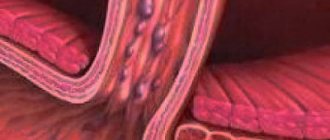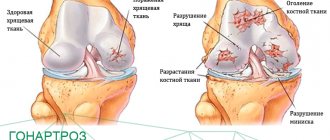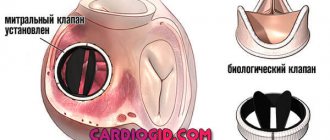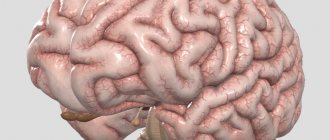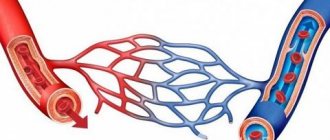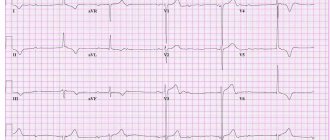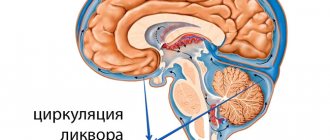Arterial hypertension (AH, arterial hypertension) is a pathological condition that leads to increased blood pressure, as a result of which the structure and function of the arteries and heart are disrupted.
Medical statistics claim that 30-40% of the world's inhabitants suffer from hypertension. Among people over 65 years of age, the disease is registered in 70%.
1
ABPM in the diagnosis of hypertension
2 Diagnosis of hypertension at MedicCity
3 Diagnosis of arterial hypertension
Hypertension significantly affects the quality of life: it causes attacks of headaches and dizziness, and affects performance. With long-term hypertension, irreversible changes occur in human organs and systems that threaten not only health, but also life itself.
Target organs for arterial hypertension:
- heart (left ventricular hypertrophy, heart failure, angina, myocardial infarction, etc.);
- brain (hypertensive encephalopathy, ischemic or hemorrhagic stroke, dementia);
- blood vessels (reduced arterial patency, aortic aneurysm);
- eyes (hemorrhages, retinal lesions, blindness);
- kidneys (renal failure).
1 ABPM for hypertension
2 ABPM for hypertension
3 ECHO-CG for hypertension
What is arterial hypertension
Arterial hypertension is the most common disease of the cardiovascular system, associated with a persistent increase in systolic pressure to 140 or higher mmHg.
Art., and diastolic - up to 90 and above. Systolic pressure is the blood pressure in large vessels at the time of contraction of the left ventricle of the heart, and diastolic pressure is the pressure maintained by the tone of the vessel walls during relaxation of the ventricle.
High blood pressure syndrome is diagnosed based on three measurements taken in a quiet environment. The main condition is that the person does not take any medications that affect blood pressure the day before. To make a diagnosis, especially when examining older people, it is enough that only systolic pressure (also called “heart pressure”) is constantly elevated.
According to WHO, arterial hypertension is the most common cardiac disease in the world, affecting 30-45% of the population. The incidence rate is not affected by income, climate, or the general socio-economic situation of the country. The pathology is more often diagnosed in men; after 60 years, it is observed in 60% of people. WHO experts predict a further increase in the prevalence of arterial hypertension due to increasing life expectancy and the aging of the population in all countries. The number of people suffering from high blood pressure is projected to reach 1.5 billion by 2025.
Features of the disease
Arterial hypertension is common throughout the world, and it is most common in highly developed countries. First of all, this is due to the fact that an active life involves communicating with a large number of people, and this entails different emotions, both bad and good, which leads to constant surges in pressure.
For many, it doesn’t even become difficult to answer the question, what is it? The prevalence of the disease makes it possible to call this pathology the plague of the 21st century. There is such a thing as arterial hypertension syndrome, this is chronic vascular insufficiency, the same as hypertension. It is disturbances in the functioning of blood vessels that provoke arterial hypertension syndrome.
Gestational hypertension is extremely negative for a woman. The appearance of this pathology is associated with pregnancy; a woman is contraindicated in taking most medications during this period.
At the same time, lack of treatment can have extremely negative consequences. Statistics show that gestational hypertension is the cause of about a third of maternal deaths during childbirth, and it can also cause fetal death or premature birth.
In addition to the fact that the patient should know the symptoms of hypertension and what it is, it is necessary to go to the hospital on time, because it is much easier to treat the disease in the first stage. It is necessary to consult with your doctor about increasing the dose or using other drugs. Self-medication can worsen the disease.
Classification
Arterial hypertension (AH) is classified according to various criteria:
- degree of pressure increase;
- severity of target organ damage, i.e. organs and systems most affected by high blood pressure;
- the cause of the appearance and development of pathology.
Classification according to blood pressure (BP) levels distinguishes several stages of arterial hypertension:
- A blood pressure not exceeding 120/80 mmHg is considered optimal. Art., but if blood pressure is within 139/89, this is considered normal;
- 1st degree of pathology - up to 159/99;
- 2nd degree - up to 179/109;
- 3rd degree (severe) - above 180/110.
Based on the reasons for the development of the disease, primary and secondary arterial hypertension are distinguished. Primary hypertension is also called essential hypertension or essential hypertension. Among all cases of hypertension, this type accounts for 95% of diagnosed cases. In secondary (symptomatic) hypertension, an increase in blood pressure is a consequence of pathology of other organs and systems of the body, for example, inflammatory kidney diseases, endocrine disorders, or problems with the central nervous system (CNS).
Conclusion
So, we figured out what it is - hypertension in adults. Hypertension, both arterial and intracranial, must be diagnosed promptly. The patient must receive appropriate treatment, which will be prescribed by a qualified specialist. Don't neglect your own health. This is not something you should save time or money on. Remember that it is only possible to avoid the negative consequences of hypertension if you consult your doctor in time, who will draw up an appropriate treatment regimen for you. This could save a life.
Be always healthy!
Reasons for development
The reasons for the development of arterial hypertension are still not completely clear. The main theory of its origin suggests that the cardiovascular system is affected by a violation of the regulatory activity of the higher parts of the central nervous system. Risk factors for developing pathology:
- Hereditary predisposition. The risk of developing hypertension is associated with the presence of heart problems in close relatives: previous heart attacks, early death, heart failure.
- Prolonged stress, uncomfortable working conditions, mental overstrain.
- Poor nutrition, excess salt in the diet. In combination with a genetic predisposition, salt consumption of more than 5 g per day significantly increases the risk of developing hypertension, since salt retains fluid in the body and causes vasospasm.
- Sedentary lifestyle, lack of physical activity.
- The presence of endocrine diseases in a person: diabetes mellitus, pathology of the thyroid gland and adrenal glands.
- Increased cholesterol levels in the blood. Because of this, the lumen of the arteries narrows and blood pressure on the walls of blood vessels increases.
- Overweight and obesity.
- Bad habits. Smoking constricts blood vessels and increases the activity of the central nervous system. Alcohol abuse increases the load on the kidneys.
- In women - hormonal changes in the body during menopause.
- Age and gender. After 60 years of age, arterial hypertension occurs in half of the population, but in men under 40 years of age the disease is diagnosed more often.
- Unfavorable environmental conditions, presence of hazardous industries in the region of residence.
- Lack of potassium and magnesium in the body, which are involved in many physical and chemical processes and affect the elasticity of the walls of blood vessels.
Important! Arterial hypertension is increasingly being diagnosed in young people under 30 years of age. This trend leads to an increase in mortality from cardiovascular diseases during reproductive age. It is necessary to regularly measure blood pressure and consult a doctor even if it is slightly but persistently elevated.
Secondary hypertension can develop as a result of taking certain medications.
Figure 1. How the vessels of people with arterial hypertension (hypertension) differ from the vessels of people without the disease. Source: CC0 Public Domain
Which doctor treats hypertension
A cardiologist treats hypertension. Also, treatment of hypertension can be carried out by a general practitioner (general practitioner or family doctor), who often detects high blood pressure when contacting him with complaints of poor health.
Drug therapy
Medicines should be selected by a doctor, who does this taking into account the individual characteristics of each patient.
Lifestyle change
First of all, you need to:
- stop smoking;
- eliminate or reduce alcohol consumption;
- try to reduce weight to normal;
- reduce salt intake to 5 g/day;
- provide regular physical activity. The most beneficial are walking, swimming and therapeutic exercises;
- increase your resistance to stress;
- optimize nutrition (eat more greens, fruits, foods with a significant content of potassium, calcium and magnesium, and, conversely, reduce the consumption of vegetable fats and protein foods). You should eat regularly.
Make an appointment Do not self-medicate. Contact our specialists who will correctly diagnose and prescribe treatment.
Rate how useful the material was
thank you for rating
Forms of arterial hypertension
Correct determination of the form of arterial hypertension plays a decisive role in preventing the development of dangerous complications and choosing the optimal therapeutic tactics. This is especially true for secondary hypertension as a consequence of dysfunction of some individual organs and systems of the body.
Nephrogenic parenchymal arterial hypertension
The most common cause of secondary arterial hypertension is kidney disease. Pressure may increase with pyelonephritis, nephropathies of various natures, tumors, tuberculosis of the kidneys and other renal pathologies.
This form of hypertension is more common in younger people. It is characterized by normal blood pressure at the initial stage of the disease. The development of the disease and severe tissue damage cause an increase in blood pressure against the background of chronic renal failure.
Nephrogenic renovascular arterial hypertension
The cause of renovascular hypertension is a violation of arterial renal blood flow, in most cases due to atherosclerosis of the renal arteries. A persistent increase in pressure develops when the lumen of the renal artery narrows by more than 70%. A characteristic sign of this form of hypertension is an increase in pressure to 160/100 mm Hg. Art. and higher.
The disease usually begins acutely, and the pressure cannot be reduced with antihypertensive drugs.
Ultrasound examination determines the asymmetry of the kidneys and disruption of the main blood flow. The disease often leads to myocardial infarction and stroke. In the absence of adequate therapy, only 30% of people are predicted to survive in the next 5 years.
Pheochromocytoma
This hypertension, which is caused by a hormonally active adrenal neoplasm, occurs in approximately 0.3% of symptomatic hypertension. The periodic release of adrenaline, dopamine and other hormones into the blood causes a sharp increase in blood pressure and often leads to a hypertensive crisis.
The diagnosis is made based on the results of hormonal tests and instrumental studies. Pheochromocytoma can only be treated surgically.
Primary aldosteronism
The disease is caused by excessive production of the hormone aldosterone in the kidneys - it is responsible for the retention of sodium ions in the body and the excretion of potassium ions. When the potassium-sodium balance is disturbed, excess potassium is formed in the cells. Because of this, fluid accumulates in the body and blood pressure increases.
Drug therapy for primary aldosteronism does not give the desired effect. Patients suffer from cramps, muscle weakness, and thirst. Pathology can lead to stroke, hypertensive crisis, and pulmonary edema.
Itsenko-Cushing's syndrome and disease
Cushing's syndrome and disease is a change in the hypothalamus, which results in excessive synthesis of glucocorticoid hormones by the adrenal cortex. One of the signs of the disease is obesity.
Blood pressure that is elevated due to hormonal imbalance is not reduced by taking blood pressure lowering medications. When the diagnosis is confirmed by CT and MRI of the adrenal glands, surgical or hormonal treatment is prescribed.
Coarctation of the aorta
One of the rare forms of arterial hypertension, the cause of which is difficulty in blood flow in the systemic circulation due to congenital narrowing of the aortic lumen.
Coarctation (narrowing) of the aorta is diagnosed immediately after the birth of a child or in early childhood. As a result of narrowing of the main blood vessel, blood flow deteriorates, which leads to systolic overload of the left ventricle of the heart. When measuring blood pressure, high readings are noted in the arms and normal or low readings in the legs.
If there is significant stenosis of the artery, surgical intervention is indicated.
Dosage forms of arterial hypertension
Some medications increase blood viscosity, retain salt and water in the body, cause vasospasm, and cause arterial hypertension.
These medications include cold drops with ephedrine derivatives, nonsteroidal anti-inflammatory drugs, some hormonal contraceptives, antidepressants, and glucocorticoids.
Such drugs should be taken strictly as prescribed by a doctor and under his constant supervision.
Neurogenic arterial hypertension
The causes of arterial hypertension can be traumatic brain injury, encephalitis, and neoplasms in the brain. This type of hypertension is called neurogenic.
Characteristic signs: convulsions, headaches, tachycardia. Normalization of blood pressure is possible only after successful treatment of the underlying disease.
Mechanism of increased blood pressure
Blood pressure is regulated by a complex system of stimulation or inhibition of blood flow in the vessels. An increase in pressure occurs with an increase in the volume of cardiac blood output per minute and the resistance of the vascular bed. This physiological process is controlled by the hypothalamus and the vasomotor center located in the brain stem.
Three main reasons can lead to an increase in blood pressure:
- narrowing of the arterioles of the systemic circulation;
- a shift of blood masses towards the heart due to narrowing of the veins - this leads to an expansion of the heart cavity, an increase in tension in the heart muscles and an increase in the volume of blood ejection;
- increased cardiac activity based on a signal from the sympathetic nervous system.
Clinical and pathophysiological changes in target organs
Arterial hypertension negatively affects the functionality of many organs and systems of the body:
- Heart. Excessive efforts of the heart muscle to push excess blood volume through narrowed vessels leads to hypertrophy and impaired diastolic function of the left ventricle. Against the background of constant oxygen starvation, the heart stops contracting fully, resulting in the development of chronic heart failure. Due to the fact that the vessels remain in a narrowed state for a long time, the muscle wall is replaced with connective tissue. This can cause atherosclerosis of the coronary arteries.
- Brain. High blood pressure is the main cause of non-traumatic intracranial hemorrhage, ischemic stroke, hypertensive encephalopathy, cognitive impairment and dementia.
- Kidneys. Impaired kidney function can be both a cause and a consequence of arterial hypertension. Renal failure as a result of constantly elevated blood pressure manifests itself in the form of pathological leakage of protein through the renal filter (microalbuminoria) and a decrease in the excretory function of the kidneys.
- Due to constant narrowing, the vessels of the fundus of the eye impede the blood supply to the tissues of the eye, and they experience oxygen starvation.
According to the severity of target organ damage, there are 3 stages of hypertension:
- at stage I, laboratory and instrumental studies do not show any changes in target organs;
- at stage II, the results of blood tests or studies of the heart and blood vessels using ECG, ultrasound and other diagnostic methods show the presence of at least one sign of damage. Among them: increased creatinine levels in the blood, left ventricular hypertrophy, the presence of cholesterol plaques, etc.;
- at stage III, clinical signs of target organ diseases appear: stroke, heart attack, angina pectoris, aortic aneurysm, heart or kidney failure, visual impairment and others.
How to make a diagnosis
To diagnose hypertension, the first step is to check how stable the increase in blood pressure is. To do this, you need to regularly measure it using a tonometer.
If within a few weeks a measurement was taken three times, which reflected an increase in the device’s readings above the norm, we can talk about the presence of hypertension.
The next stage is to examine the patient to determine if he has abnormalities in the functioning of his target organs. This will help determine what stage of hypertension the patient has.
Another important step is to differentiate primary from secondary hypertension. A detailed laboratory study of the patient’s biological materials, as well as hardware testing, will provide significant assistance in this regard.
Among the main research methods are the following:
- blood and urine tests;
- electrocardiogram;
- echocardiography;
- radiography;
- Ultrasound of the peritoneum;
- fundus examination by an ophthalmologist.
Blood tests are prescribed to detect glucose, potassium, hemoglobin, uric acid, hematocrit, creatinine and determine the level of these elements. In addition, the amount of cholesterol in the blood is determined. The presence of protein and glucose is detected in the urine.
If a secondary etiology of the disease is established, the patient is referred for further detailed examination to specialists to make a more accurate diagnosis.
Clinical picture
The course of arterial hypertension depends on the stage of the disease, the level of pressure increase and the target organs involved.
At the initial stage, the disease may be asymptomatic and detected only during routine blood pressure measurements.
As the pathology develops, complaints of headache, heaviness in the back of the head, tinnitus, rapid heartbeat, sleep problems, and decreased performance appear.
Persistent increase in pressure above 140/90 mm Hg. Art. may cause:
- constant shortness of breath, even with minimal physical effort;
- pain in the heart area;
- increased sweating, numbness of the limbs;
- edema and severe puffiness of the face.
Spasm of the ocular vessels is manifested by small hemorrhages in the retina, loss of clarity of vision, and flickering of spots before the eyes.
Each of these symptoms requires immediate consultation with a cardiologist.
Arterial hypertension in pregnant women
According to statistics, arterial hypertension is diagnosed in 5-8% of pregnant women. There are two types of hypertension:
- chronic - the woman had the disease before pregnancy and worsened after conception;
- gestational - formed in the second half of pregnancy.
The main reasons for persistent high blood pressure in pregnant women:
- weight gain;
- acceleration of metabolic processes;
- increased intra-abdominal pressure and blood volume;
- changes in hormonal levels.
Without timely treatment, hypertension during pregnancy can lead to serious complications: gestosis (preeclampsia, eclampsia), fetoplacental insufficiency, premature birth, placental abruption and others.
If arterial hypertension is detected, a pregnant woman should be under constant medical supervision.
Atypical manifestations
Sometimes hypertension manifests itself atypically; it can be difficult to suspect it in the presence of such uncharacteristic symptoms, especially for an ordinary person who does not have a medical education. Symptoms that are not typical for high blood pressure:
- visual acuity is impaired;
- kidney problems (frequent urination at night, urine analysis reveals protein, red blood cells, white blood cells);
- erectile dysfunction in men;
- menstrual irregularities in women.
Hypertensive crisis
A sharp sudden rise in blood pressure is one of the most common manifestations of arterial hypertension, this is a hypertensive crisis.
This condition can occur under the influence of stress, sudden changes in climate or weather conditions, or physical stress.
A hypertensive crisis is accompanied by nervous overexcitation or, conversely, lethargy, severe headache, nausea, and blurred vision.
The result of a crisis can be an acute cerebrovascular accident, myocardial infarction or other acute vascular disorder.
Treatment of high blood pressure
Source: World Cancer Research Fund
Folk remedies
At the moment, there is no evidence of the effectiveness of folk remedies for the treatment of arterial hypertension. Refusing to visit a doctor with symptoms of hypertension and hoping to stabilize the condition with the help of folk remedies can lead to irreversible consequences and the development of serious complications.
Any folk remedy can only be an addition to the main treatment and must be approved by a cardiologist.
Drug treatment
The drug treatment regimen is determined by a cardiologist after a comprehensive examination and determination of the causes of arterial hypertension. The choice of technique is made taking into account the gender, age of the patient, the presence of concomitant diseases and the goals set.
The drug complex may include diuretics, sedatives, drugs that suppress vasomotor activity and some others, depending on the condition of the target organs.
Can it be cured without drugs?
How to treat intracranial hypertension in adults? Is it necessary to resort to drug treatment? It is important to remember that under no circumstances should you completely abandon the conservative treatment prescribed to you. However, it can be supplemented with other methods of treating intracranial hypertension in adults. Among them are the following:
- A diet in compliance with the principles of proper nutrition, which also includes a rational diet and drinking water. This will help significantly influence the normalization of blood pressure.
- Specialized gymnastics, which specialists develop individually for each patient, can normalize intracranial pressure without the use of medications.
- Manual therapy, as well as sessions of osteopathy of the spine (namely its cervical region) will help to significantly relieve the venous bed of the skull.
- Physiotherapy as an adjunct to conservative treatment.
- Acupuncture.
Also, the symptoms of intracranial hypertension in adults can be relieved using traditional medicine methods. They involve the preparation of oils, decoctions and infusions from a variety of herbs. However, such treatment is used only to maintain good functioning of the body while the patient continues treatment.
Let's give some examples. Thus, lavender infusion is widely used. To prepare it, you will need to purchase pharmaceutical lavender, steam it in a quarter liter of boiling water, and then leave for an hour. This decoction must be taken once a day before meals for a month.
Some infusions cannot be used for so long, but they are no less effective. For example, a medicine made from lemon and garlic, which is taken for no more than two weeks, is successfully used. To make it, use two lemons and two cloves of garlic, which are mixed using a blender until the mass becomes homogeneous. It is poured with hot water (about one and a half liters will be required) and left for about a day in the dark. Then the infusion is filtered and two spoons are taken daily immediately before bed.
Essential oils and their mixtures are also effectively used to get rid of obsessive headaches.
Although the methods described are often successful and provide some relief, they should not be the only treatment option. All methods of this kind become truly effective only if they are part of complex therapy, which is used as prescribed by a qualified specialist. You shouldn't joke with your health. Always follow your doctor's recommendations exactly.
